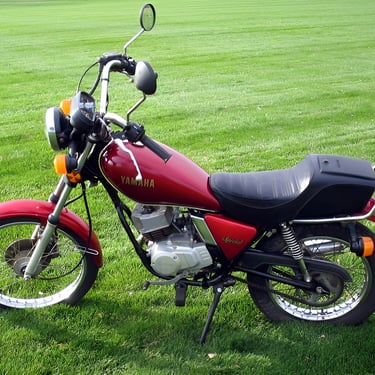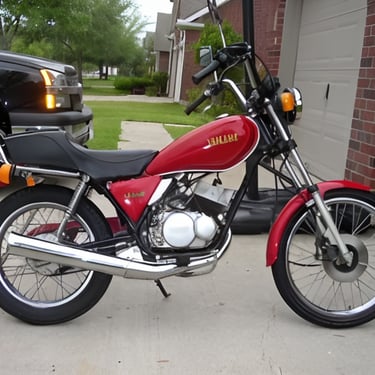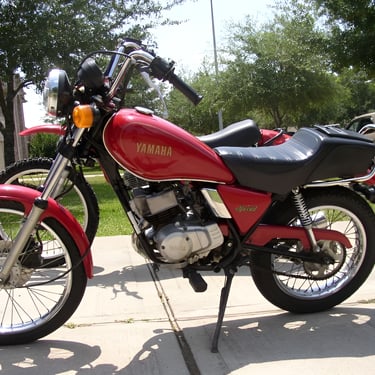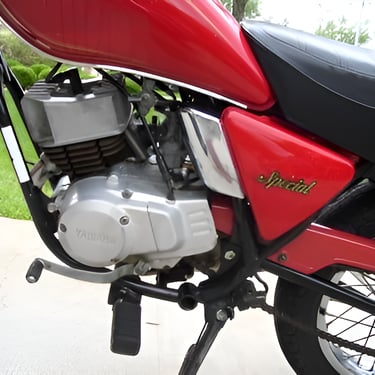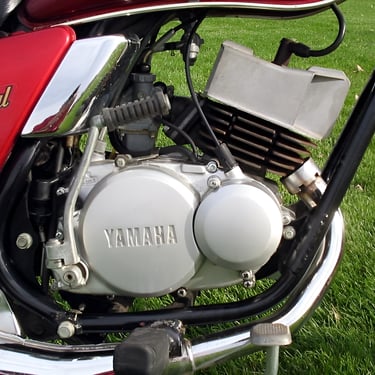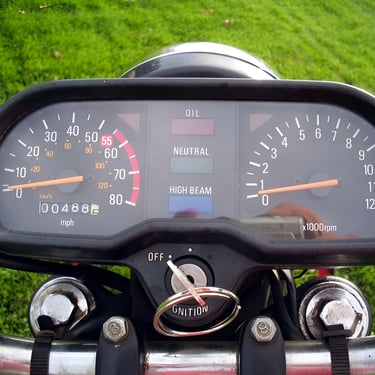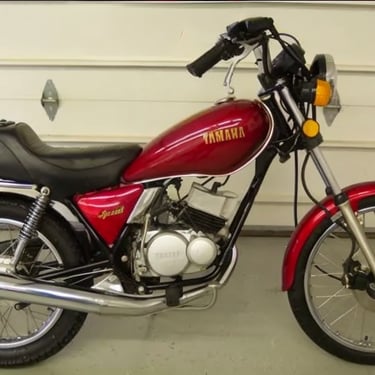The 1984 Yamaha RX50: A Rare Mini Cruiser's Legacy
The 1984 Yamaha RX50 is a notable chapter in Yamaha's history, with only about 2,000 units produced. This mini cruiser was distributed through special channels rather than sold directly to the public, enhancing its allure among collectors. It represented Yamaha's innovative spirit of the 1980s, combining the aesthetics of larger cruisers with the practicality of a small-displacement motorcycle.
JAPAN TWO STROKEYAMAHA CHOPPER MOPEDS1980'S
12/12/20243 min read
The 1984 Yamaha RX50: A Rare Mini Cruiser's Legacy
Introduction
The 1984 Yamaha RX50 represents one of the most intriguing chapters in Yamaha's motorcycle history. This rare mini cruiser was part of a limited production run, with only approximately 2,000 units ever manufactured. What makes this motorcycle particularly special is its unique distribution - these bikes were never sold directly to the public as new vehicles, but rather were distributed through Yamaha's special channels. The RX50 embodied Yamaha's commitment to innovation during the 1980s, offering riders a compact yet capable machine that combined the aesthetics of a larger cruiser with the accessibility of a small-displacement motorcycle. Its release coincided with a period when small-displacement motorcycles were gaining popularity in various markets, though the RX50's limited availability would ultimately contribute to its legendary status among collectors.
Design and Features
The Yamaha RX50 showcased a distinctive design philosophy that set it apart from conventional small-displacement motorcycles of its era. Despite its modest 50cc engine size, the bike was styled to emulate the presence of larger cruiser motorcycles, featuring a low-slung profile and classic cruiser proportions. The motorcycle's design incorporated a comfortable, upright riding position with a well-padded seat, making it accessible for both novice and experienced riders.
Key design elements included a teardrop-shaped fuel tank, chrome accents, and a classic round headlight that contributed to its timeless aesthetic. The bike also featured practical additions such as an under-seat storage compartment, a useful feature rarely found on motorcycles of this class. The instrument cluster was simple yet functional, featuring basic instrumentation that provided essential information to the rider.
The overall fit and finish demonstrated Yamaha's commitment to quality, with robust construction and attention to detail that helped these machines withstand the test of time. The bike's compact dimensions made it particularly suitable for urban environments while maintaining an impressive road presence despite its small size.
Technical Specifications
At the heart of the 1984 Yamaha RX50 was a air-cooled, single-cylinder, two-stroke 50cc engine. This power unit was similar to the one used in the YSR50, demonstrating Yamaha's strategy of leveraging proven engineering across different models. The engine was mated to a manual transmission, offering riders full control over power delivery and enabling a more engaging riding experience compared to automatic alternatives.
The motorcycle's chassis was built around a sturdy steel frame, providing a good balance between rigidity and weight. With a curb weight of approximately 84 kg (185 lbs), the RX50 was notably lightweight, contributing to its agile handling characteristics. The bike's compact dimensions included a manageable seat height that made it accessible to riders of various statures.
The suspension system consisted of conventional telescopic forks at the front and dual shock absorbers at the rear, offering adequate comfort for daily riding. Braking was handled by drum brakes both front and rear, which, while basic by today's standards, were appropriate for the bike's power and weight.
Performance and Handling
The performance characteristics of the Yamaha RX50 were tailored to meet the needs of both beginners and urban commuters. While its 50cc engine wasn't designed for high-speed touring, it delivered reliable performance in urban environments. The two-stroke power plant provided surprisingly sprightly acceleration from a standstill, characteristic of two-stroke engines, making it well-suited for city traffic navigation.
The bike's lightweight nature and well-balanced chassis contributed to exceptional maneuverability. Its compact wheelbase and low center of gravity made it particularly adept at handling tight corners and navigating through congested city streets. The suspension setup, while basic, offered adequate comfort for daily riding conditions, effectively absorbing typical road imperfections.
One of the RX50's strongest points was its fuel efficiency, with the small-displacement engine delivering excellent economy. The manual transmission allowed riders to maximize the available power, making it possible to maintain comfortable cruising speeds while still having enough in reserve for passing maneuvers when needed.
Legacy and Collectibility
Today, the 1984 Yamaha RX50 holds a special place in motorcycle history, particularly among collectors and enthusiasts of rare Japanese motorcycles. Its limited production numbers and unique distribution model have made it an increasingly sought-after collector's item. Well-preserved examples are particularly valuable, though finding one in original condition can be challenging due to their age and the fact that many were modified by their owners over the years.
The motorcycle's significance extends beyond its rarity; it represents an interesting period in motorcycle design when manufacturers were experimenting with creating smaller displacement bikes that carried the presence and style of larger machines. For collectors, the RX50 offers an accessible entry point into vintage motorcycle ownership, combining historical significance with practical usability. Parts availability can be challenging, but a dedicated community of enthusiasts helps keep these machines running, sharing technical knowledge and sourcing replacement components.
